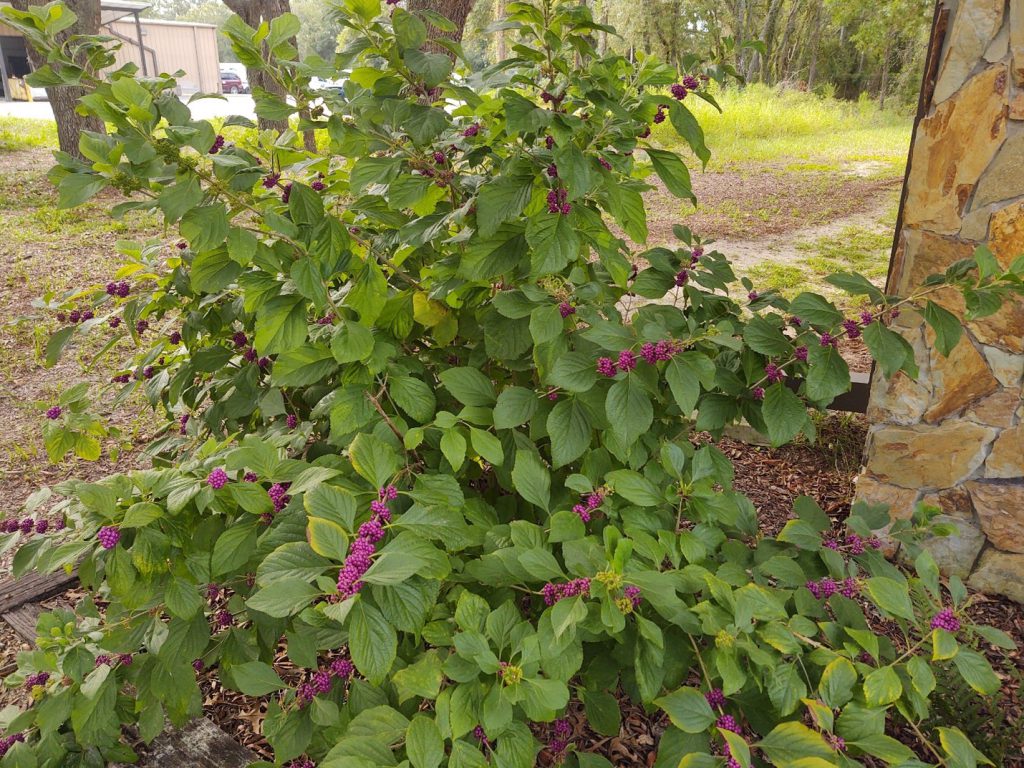The American beautyberry is a gorgeous, low-maintenance shrub loved for its vibrant purple berries. However, like any plant, it can fall victim to fungal rot if proper care is not taken. Rot can quickly damage roots, stems and leaves, potentially killing the plant. Thankfully, rot is easily preventable if you understand what causes it and how to promote optimal growing conditions.
What Causes Rot in American Beautyberry?
Rot in American beautyberry is most commonly caused by:
-
Excess Moisture – Wet soil, poor drainage, overwatering, excessive humidity. This allows fungal spores to thrive.
-
Compacted Soil – Lack of air circulation prevents proper root development.
-
Root Damage – Wounds provide entry points for pathogens
-
Poor Pruning – Improper cutting creates openings for decay.
-
Cold Weather – Frost and low temperatures make plants more prone to rot.
-
Nutrient Deficiencies – Weakened plants are less able to resist disease.
Preventing Rot in American Beautyberry Shrubs
Here are some tips to keep your American beautyberry healthy and rot-free
Provide Proper Drainage
-
Choose a site with well-draining soil or amend dense clay soil with organic material like compost.
-
Plant on a slope to encourage drainage away from the roots.
-
Consider using raised beds for better airflow and drainage.
Practice Wise Watering Habits
-
Water deeply but infrequently, allowing the soil to partially dry between waterings.
-
Use drip irrigation or soaker hoses to target the roots and avoid wet foliage.
-
Mulch around the plant to maintain soil moisture and reduce evaporation.
Ensure Adequate Sunlight
-
American beautyberries need at least 6 hours of sun per day. Insufficient light leads to weak growth.
-
Prune overhanging branches or nearby plants that create too much shade.
Promote Air Circulation
-
Give American beautyberry shrubs adequate spacing for air to circulate.
-
Remove weeds and dense groundcovers that trap humidity around the stems.
-
Select a site with good airflow and avoid cramped locations.
Fertilize Properly
-
Fertilize American beautyberry in spring with a balanced organic fertilizer.
-
Avoid high-nitrogen formulas which cause excessive leaf growth and susceptibility.
-
Do not over-fertilize which can damage roots and lead to rot.
Prune and Sanitize Properly
-
Prune American beautyberry after flowering to shape and improve air circulation.
-
Disinfect pruning tools between cuts with isopropyl alcohol to prevent spreading decay.
-
Use proper pruning techniques and avoid leaving stubs which invite rot.
Monitor Moisture Regularly
-
Check soil moisture frequently, especially if weather is unusually wet. Reduce watering if needed.
-
Watch for any yellowing or wilting leaves as possible signs of overwatering.
Address Problems Quickly
-
Inspect American beautyberry regularly for early signs of rot like dark lower leaves or fungal growth on stems.
-
Remove and destroy infected plant parts immediately to prevent spread.
-
Use fungicides if significant rot develops. Identify and treat the cause.
What If Rot Occurs?
Even with preventive care, American beautyberries may occasionally develop issues with rot. Here’s how to respond:
-
Act quickly before rot spreads further through the plant.
-
Prune out all diseased branches, cutting at least 6 inches below rotted areas. Sterilize tools.
-
Remove fallen plant debris around the shrub which may harbor fungal spores.
-
Use a natural fungicide like neem oil or Bacillus subtilis if fungus remains.
-
Assess and improve growing conditions like drainage and sunlight to deter recurrence.
FAQs About Preventing Rot in American Beautyberry
How often should I water my American beautyberry?
- Water deeply 1-2 times per week if rainfall is less than 1 inch. More mature plants are more drought tolerant.
Should I use mulch around my American beautyberry?
- Mulching 2-3 inches deep helps retain soil moisture. Use organic mulches like wood chips, pine needles or bark.
When should I fertilize my American beautyberry shrub?
- Fertilize American beautyberry once in early spring with a balanced fertilizer to support the season’s growth.
What pruning is needed for American beautyberry?
- Prune immediately after flowering while berries are still green. Remove up to 1/3 of branches to shape plant and improve air circulation.
What are signs my American beautyberry has rot?
- Look for leaf yellowing and drop, dark lower branches, unusual wilting, fungal growth on stems or roots, or discolored softened areas on the plant.
By selecting the right location, following best care practices, and addressing problems promptly, you can keep your American beautyberry shrub thriving and rot-free for years of beauty.

Scorched Leaves: Dealing with Leaf Scorch
Leaf scorch sneaks up like a silent alarm. Browned edges and faded green hues are the first whispers of distress. The leaves might show a bleached appearance, with their texture turning wrinkly or scaly. Its the plants equivalent of crying out for sunscreen.
️ Cooling Down the Burn
When your American Beautyberry acts like its had too much sun, its time for some shade therapy. Move potted plants to sheltered areas or indoors. For garden plants, rig up some sunshade or introduce companion planting for natural cover.
Hydration is crucial—consistent watering keeps the soils thirst quenched. But dont flood the plants world; aim for a steady sip, not a gulp. And mulch? Thats your plants cool blanket, maintaining soil moisture and temperature.
New growth is your green light. Focus on these fresh starts, as theyll be the ones to carry on the beautyberry legacy. Hold off on any harsh treatments like repotting or fertilizing until the plant has regained its composure.
Long-term, position your beautyberry out of the harsh midday glare. Morning sun can be a gentle kiss, but as the day blazes on, make sure your plant has a retreat. And remember, even in the shade, a heatwave can trigger scorch—keep the water coming and the roots happy.
